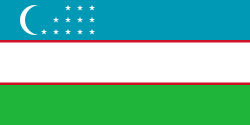Aral Sea's Shrinking Legacy: A Stark Environmental Warning
 Uzbekistan
UzbekistanThe Aral Sea, once the fourth largest lake in the world, has drastically shrunk into a barren desert primarily due to extensive irrigation projects initiated during the Soviet Union era. By 2015, its surface area had decreased from 68,000 square kilometers to around 8,000 square kilometers, with the remaining seabed now forming the Aralkum desert, impacting over three million inhabitants in the region.
Ibrahim Thiaw, Executive Secretary of the United Nations Convention to Combat Desertification, described the situation as "one of the biggest environmental disasters in the world." Studies indicate that the lake's decline doubled atmospheric dust in the area from 1984 to 2015, significantly worsening air quality and contributing to glacial melt due to increased salinity, which has destroyed local ecosystems and livelihoods.
In response to the environmental degradation, regional governments are pursuing vegetation efforts on the former lakebed, with support from the EU and USAID. Experts warn that the Aral Sea's plight is a dire cautionary tale, as similar scenarios are unfolding globally, with water systems depleting due to climate change and industrialized agriculture.
 Uzbekistan
Uzbekistan Uzbekistan
Uzbekistan Uzbekistan
Uzbekistan